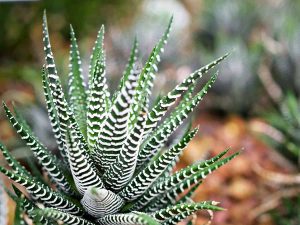Your Easter Cactus has been sitting on the windowsill for months, but it hasn’t produced any blooms. You’re eager to see those vibrant flowers, but you’re not sure what it needs. Getting an Easter Cactus to bloom can be straightforward with the right care. Here’s how to make your Easter Cactus bloom and brighten up your space.
Table of Contents
Growth Cycle and Bloom Phases of Easter Cactus

Easter cactus, also known as Echinopsis oxygona, is a popular houseplant native to Brazil and Argentina. It boasts beautiful white or pink flowers that grow on long wooly stems. These blossoms open in the evening and close by midday, adding a touch of enchantment to your home. To make your Easter cactus bloom, it’s essential to understand its growth cycle and bloom phases.
The growth cycle of an Easter cactus can be divided into two main phases: the vegetative phase and the bloom phase. During the vegetative phase, your cactus will focus on growing new stems and leaves. This phase typically occurs during the warmer months, with temperatures between 60 to 70°F. It’s crucial to provide your plant with bright, indirect light and well-drained potting soil during this time, as mentioned by Iowa State University.
As the days grow shorter and temperatures begin to drop, your Easter cactus will transition to the bloom phase. To encourage blooming, reduce the watering frequency, allowing the soil to become slightly dry. It’s also advised to expose your cactus to cooler nighttime temperatures, ideally around 55°F. These conditions will signal the plant to start producing flower buds.
However, take note that your Easter cactus does not tolerate extreme drought. As Purdue University explains, the plant may drop flower buds if the soil gets too dry. To avoid this, water your cactus thoroughly but only when the top inch or so of soil feels dry.
Optimal Growing & Care Conditions
Light Requirements

To ensure your Easter cactus blooms, it needs at least 12 hours of continuous darkness during the 5-6 weeks prior to blooming. Keep your cactus in a spot with bright, indirect light during the day to prevent leaves from turning a reddish color or getting burned.
Temperature and Humidity
Easter cactus prefers temperatures between 60-70°F during the day and slightly cooler at night. Maintain a consistent humidity level for optimal growth. Avoid placing the cactus near heating vents or cold drafts.
Soil and Potting
Use a well-draining soil mix, ideally one specifically formulated for cacti. Ensure the pot has drainage holes to prevent waterlogging and root rot. Repot your cactus every 2-3 years to refresh the soil and provide room for growth.
Watering

Water your Easter cactus thoroughly from the top down, allowing the potting soil to become fully wet. Then, wait for the soil to dry before watering again. Be careful not to overwater, as cacti are sensitive to excess moisture.
Fertilization
Feed your cactus a half-strength balanced fertilizer (such as 10-10-10) once new growth begins in late winter or spring. Continue to fertilize monthly throughout the growing season for the best results.
Pruning and Maintenance
Once the Easter cactus has finished blooming, remove spent flowers to promote new growth. Prune your cactus to maintain its shape and encourage branching. Occasionally check your cactus for pests or disease, and treat any issues as soon as possible to keep it healthy.
Inducing Blooms

Light Manipulation
To make your Easter Cactus bloom, start by adjusting the light conditions. Easter Cacti need 14 to 16 hours of uninterrupted darkness to initiate flowering. Begin altering the light exposure in autumn, providing bright, indirect light during the day, and a dark environment at night. You can achieve this by moving the plant to a dark room or covering it with a light-blocking cloth.
Temperature Control
Temperature also plays a crucial role in getting your Easter Cactus to bloom. For successful bud formation, maintain a cool night temperature between 50-60°F (10-15°C). Daytime temperatures should be slightly higher, around 65-70°F (18-21°C). The Penn State Extension recommends a cold period to encourage flowering in Easter Cactus. Avoid drastic temperature fluctuations as this may hinder the blooming process.
Bud Formation Care
As your Easter Cactus develops buds, it’s essential to maintain proper care. Water your cactus thoroughly, allowing the soil to dry slightly between waterings. Be mindful of over-watering, as this can lead to bud drop. Keep your plant in a bright, indirect light source and avoid any extreme temperature changes. As the University of Illinois Extension suggests, continue providing 12 to 15 hours of darkness for 5 to 6 weeks during bud formation.
Why is my Easter Cactus not blooming?
One reason your Easter Cactus may not be blooming is due to insufficient periods of darkness. These plants require longer nights and cooler temperatures to encourage flower formation. Ensure your cactus has at least 12 hours of uninterrupted darkness for 5-6 weeks. Avoid placing it in a location where artificial light sources may disrupt the dark period.
Another important factor is temperature. Easter cacti thrive in cool nighttime temperatures of around 60-65°F (15-18°C) during their blooming period. If the temperature is too high, the plant may not form flower buds, as mentioned by the Iowa State University. Maintain a consistent cool temperature to promote blooming.
Watering habits also impact the blooming process. Ensure you are watering your Easter cactus properly. Keep the potting soil moist but avoid overwatering. Too much water can cause root rot, whereas underwatering may result in a lack of blooms. Monitoring and adjusting your watering routine can make a significant difference in the blooming of your Easter cactus.
Lastly, focus on providing proper nutrition. Apply a half-strength balanced fertilizer, like a 10-10-10 blend, after the new growth begins in late winter or spring. Feed the Easter cactus on a monthly basis.
When Will the Easter Cactus Re-bloom?

The Easter cactus typically blooms between March and May. To encourage re-blooming, you should understand this plant’s unique requirements. This process is straightforward, and you will soon see your Easter cactus display beautiful flowers again.
First, remember that Easter cacti are sensitive to day length. To initiate blooming, your plant needs 12 to 15 hours of continuous darkness for 5 to 6 weeks. Make sure the plant is undisturbed during this period, as prolonged interruption to its darkness routine can inhibit bud formation.
Next, pay attention to the watering technique. The ideal approach is to water from the top down, thoroughly moistening the potting soil. Over-watering is a common issue, so wait until the top layer of soil is slightly dry before watering again. This will prevent root rot and other undesired complications.
Lastly, you must monitor temperature and light conditions. Your Easter cactus prefers cooler temperatures of around 60 to 65°F and should be protected from intense heat and direct sunlight. Exposure to artificial light at night can also disrupt the blooming process.






